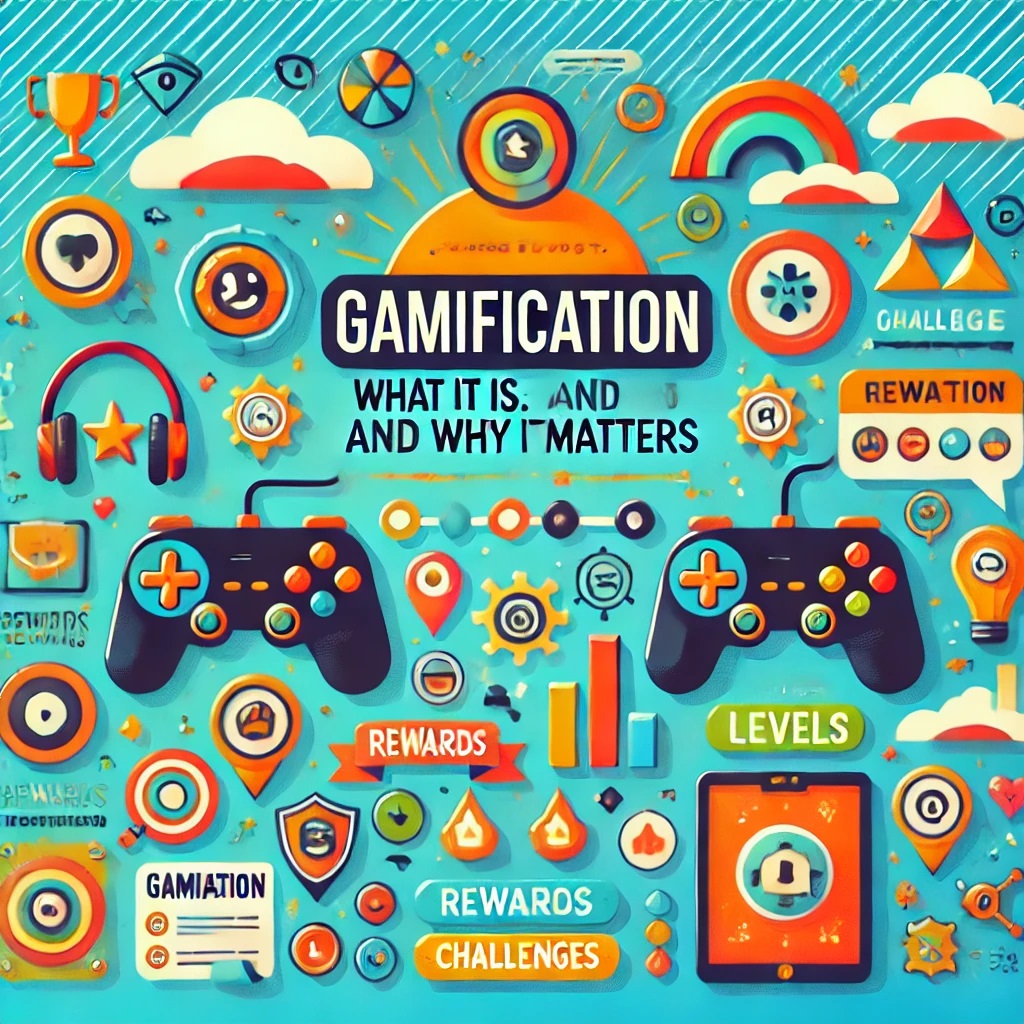Introduction to Gamification: What It Is and Why It Matters
Gamification is transforming how we engage with everyday tasks, making them more enjoyable and motivating. But what exactly is gamification, and why does it matter in today’s digital landscape? This blog post will explore the concept of gamification, its key elements, and why it has become an essential tool in various sectors, including business, education, and healthcare.
What is Gamification?
Gamification is the application of game-design elements and principles in non-game contexts. It leverages the psychological triggers that make games engaging—such as competition, rewards, and achievement—and applies them to real-world activities. This can range from earning points for completing tasks to competing on leaderboards and unlocking levels of achievement.
Key Components of Gamification:
Points: Users earn points for completing tasks or reaching milestones. These points can be displayed on leaderboards, leading to competition and motivation.
Badges: Visual representations of achievements, such as “Newbie” or “Expert,” which provide recognition and status.
Leaderboards: A ranking system that shows users how they compare to others, fostering a sense of competition.
Challenges and Quests: Specific tasks or missions that users complete to earn rewards, keeping them engaged and motivated.
Why Gamification Matters:
Gamification has gained popularity because it effectively increases engagement, motivation, and participation. Here’s why it matters:
- Increases Engagement:
- By turning mundane tasks into exciting challenges, gamification captures and retains users’ attention. This is especially valuable in education and corporate training, where maintaining engagement is often challenging.
- Enhances Motivation:
- Gamification taps into both intrinsic and extrinsic motivators. Intrinsically, it satisfies the human need for achievement and recognition. Extrinsically, it provides tangible rewards, like discounts or prizes, for completing certain actions.
- Improves Learning and Retention:
- In educational settings, gamification has been shown to improve learning outcomes by making content more interactive and enjoyable. It allows students to learn at their own pace and provides instant feedback, which enhances retention.
- Boosts Productivity:
- In the workplace, gamification can boost productivity by setting clear goals and rewarding employees for reaching them. It turns tasks into games, making work feel less like a chore and more like an opportunity for achievement.
- Encourages Positive Behavior:
- Gamification can be used to encourage healthy habits, such as exercising more or saving money. Apps like Fitbit and Duolingo use gamification to motivate users to improve their health or language skills by tracking progress and rewarding achievements.
Examples of Gamification in Action:
- Education:
- Platforms like Duolingo use gamification to teach languages. Users earn points for completing lessons, compete on leader boards, and receive badges for progress, making learning fun and addictive.
- Corporate Training:
- Companies like IBM use gamification to enhance employee training programs. Employees earn badges for completing courses and can compete against colleagues, which increases participation and completion rates.
- Healthcare:
- Apps like Fitbit gamify fitness by tracking users’ steps, setting goals, and offering rewards for reaching milestones, encouraging users to stay active and healthy.
- Marketing:
- Starbucks’ loyalty program uses gamification by awarding points for purchases, which can be redeemed for free items. Customers are motivated to make repeat purchases to earn rewards.
The Science Behind Gamification:
Gamification works because it leverages fundamental psychological principles:
Motivation: Both intrinsic (personal satisfaction) and extrinsic (rewards).
Behavioral Triggers: Small, frequent rewards keep users engaged.
Feedback Loops: Continuous feedback, such as progress bars or notifications, encourages users to keep going.
Gamification is more than just a buzzword—it’s a powerful tool that drives engagement, motivation, and productivity across various fields. As we continue to integrate technology into our daily lives, gamification will play an increasingly important role in shaping how we interact with the world around us. Whether in education, business, or personal development, the principles of gamification are here to stay.

Leave a Comment